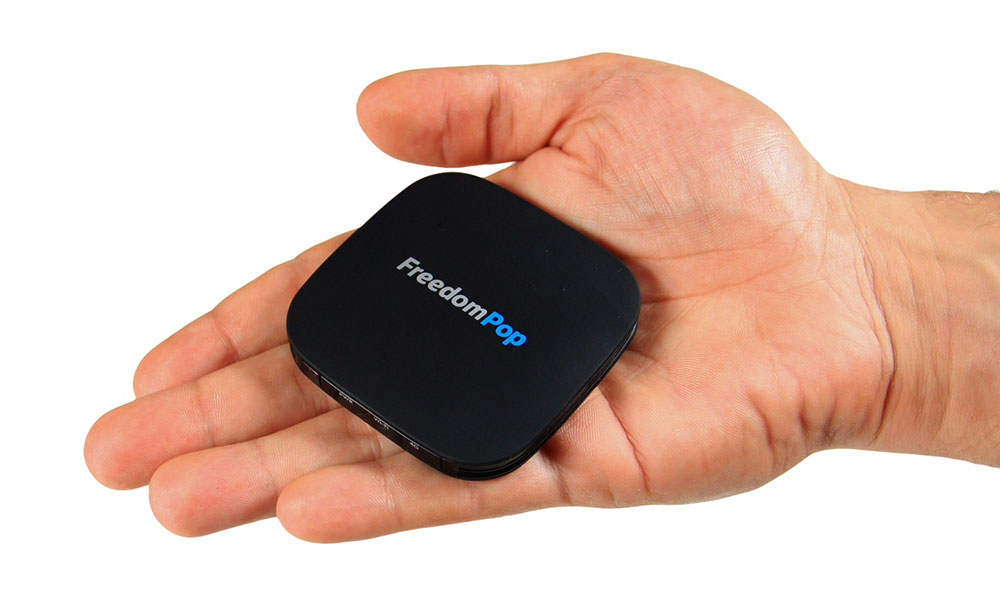
Meetings Warrior? Get Online on Your Own WiFi
Having a stable internet connection is a priority for many business travelers. If you're among the ranks of the always-connected, instead of just hoping the onsite WiFi isn't flaky perhaps it's worth buying a supply of your own.
Where I’m going, there’ll (probably) be no internet.
If all goes without fail, I’ll be married on Saturday. And Sunday, my new wife and I will be making a trip to Tennessee, keeping our fingers crossed that Great Smoky Mountains National Park will be open (it’s not a sure thing) by the time we get there.
I live and breathe internet—though, as my colleague Emma Beck suggested in a recent story, I probably need to take a step back from my gadgets. (I’m not going out like Baratunde, though.)
But before I go, I have one piece of advice about feeding “the addiction” that might come in handy. It starts with the WiFi. We’ve had story after story saying the one thing that consumers and event-goers really want is a reliable wireless connection. Some people will even pay for a good one.
But what if this isn’t just a problem for hotels and conference centers? What if internet access is so important to us that we need a way to quickly connect at all times?
Do we users need to adapt by carrying around an ever-present internet connection—or at least some way to ensure we’re not stuck offline if something goes wrong with the conference internet?
Here are some options I’d like to offer for doing just that. I’ve tried many of these myself, because I need to feed my addiction somehow.
Phone Tethering
You already have a hotspot in your pocket. You just don’t think of it that way.
You’ve probably thought about tethering your device to your phone whenever the internet konks out at a conference and you need to keep working. Or when you’re in the airport or a hotel and you want to avoid paying ultra-expensive WiFi fees. Fortunately, many Android devices—along with iPhones (whether through jailbreaking or by paying a fee to your wireless provider of choice) support this.
The upsides: You already carry around an internet connection—so why not use it?
The downsides: A few things. First, it’s not cheap. For many users, the data plans that come with their phones are affordable for the phones themselves, but your device of choice will suddenly become a data hog with a laptop hooked up to it all the time. You’ll also be drawing more on a mobile device with other uses that may be more important to you—this can lead to issues with smartphone stability (particularly if you choose to jailbreak your phone) and battery life. And if you get a call, there’s a good chance your internet connection will go down. For these reasons, I use this as a backup option only.
Dedicated Hotspots
For the people next to me, I had the brief aura of “hero” when I attended and wrote about the paidContent Live Conference earlier this year. That’s because the conference internet was struggling to keep up, but I had offered up (1) a mini wall-strip that allowed more people to plug in their laptops and (2) a CLEAR Spot, a wireless modem that works on Sprint’s WiMAX network.
It worked well, and as a result, everyone around me stayed online. Perhaps you could be the conference hero next time around?
The upsides: When you have a connection, it’s fast and efficient. I pay $50 a month for a CLEAR Spot, and I bought it because I was sick of inconstant coffee shop WiFi. I floated around just enough that the investment was worth it. If you find yourself in need of an alternative to weak WiFi, this might be the option for you.
The downsides: Right now, this space is seeing a lot of transition. While my CLEAR Spot remains online, Sprint recently purchased the company and shut down its stores last month. In the long run, this could end up being a good thing. For one thing, CLEAR’s WiMAX service had never hit the critical mass of the more well-known LTE, and as a result, the service is spotty or nonexistent outside of major urban areas. (The network is also likely to shut down at some point.) But CLEAR was the only provider of its kind that sold unlimited access via a hotspot without a contract. While bigger players like Verizon, Sprint, and AT&T offer the services CLEAR did, there are many of the same drawbacks of smartphones—i.e., contracts and data limits.
Get It Free, Pay It Forward
Instant Karma’s gonna get ya…or maybe it’s the other way around.
Last year, the internet startup Karma launched a service that lets users gain wireless access through a peer-to-peer style mechanism. Essentially, you share your hotspot with others and gain more free data.
It’s not the only company mining this space. FreedomPop does something similar, offering service discounts in exchange for social media shares. These models are new, and if you’re only trying to connect on the side, the value proposition is clear.
The upsides: The upfront costs are low—inexpensive or even free, in some cases.
The downsides: These companies are relatively new and untested (FreedomPop has been criticized for its overly pushy approach). Like CLEAR, they also rely on the also-ran WiMAX technology, though FreedomPop also offers LTE-based options. The real danger, though, is if you run into overages, you’re on the hook for fees.
So the real question is, does having an always-available connection matter so much to you that you need to carry it around with you? Let me know your take in the comments.
And here’s to not screwing up my engagement within the (final) next couple of days.
The mobile startup FreedomPop offers internet for cheap—though be careful of hidden fees.






Comments